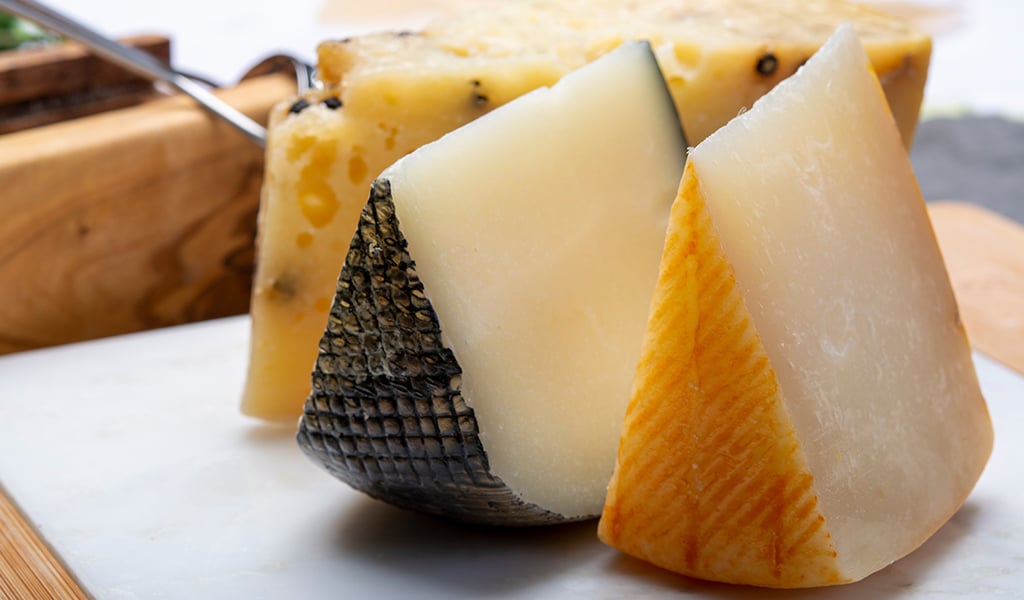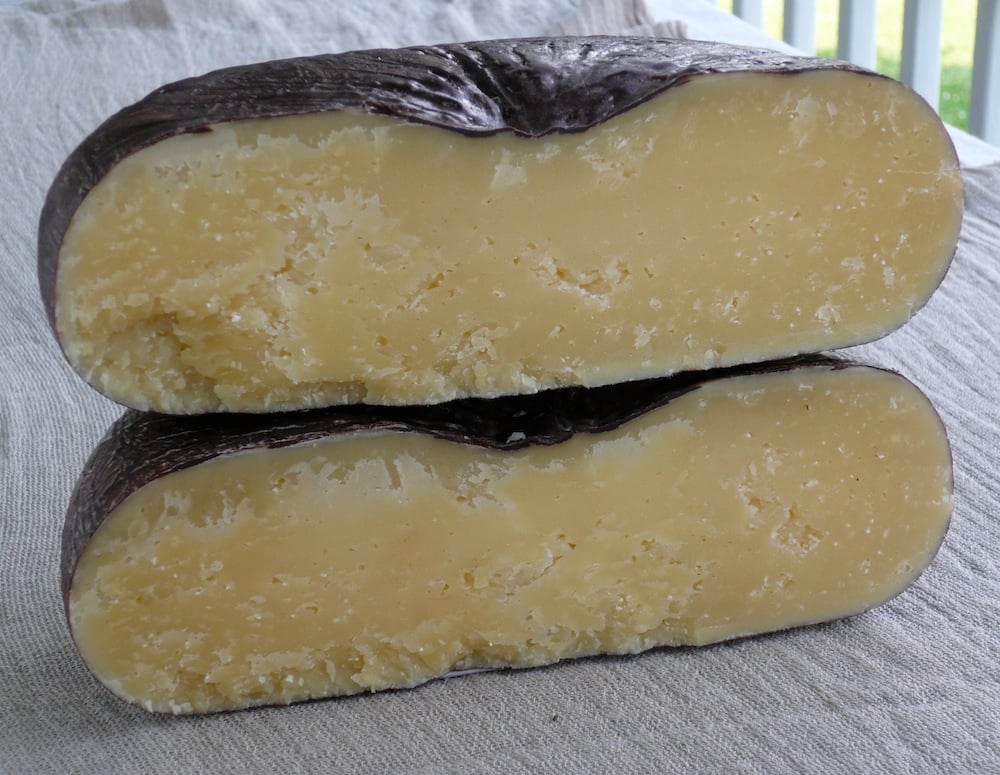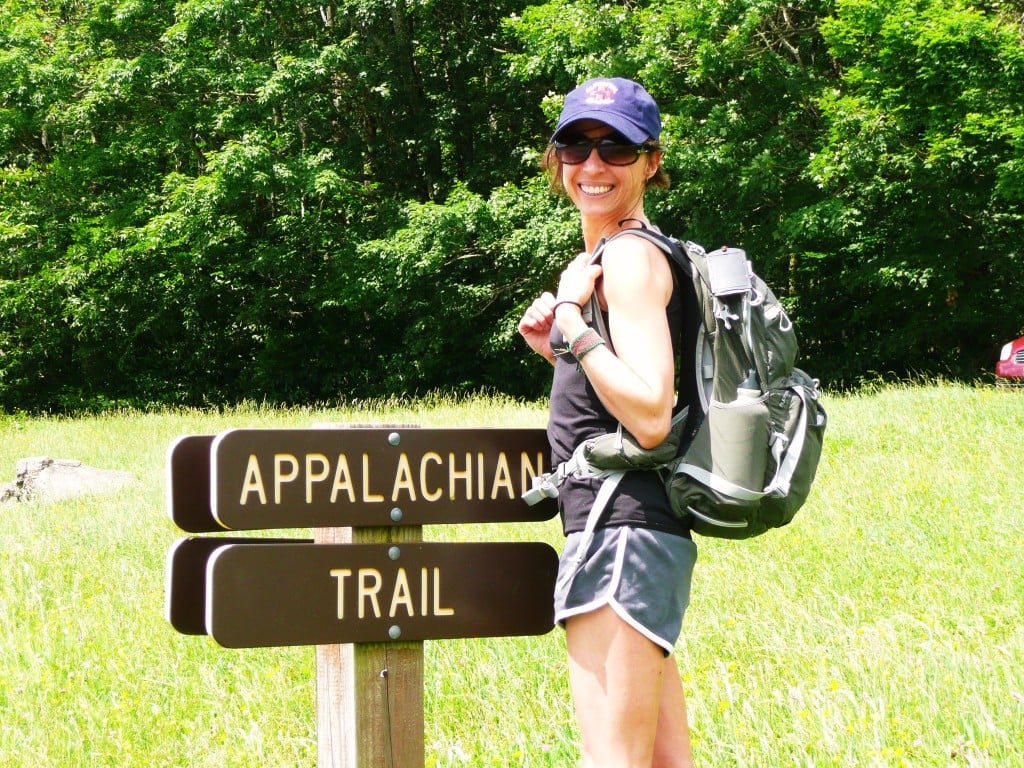Backpacking With Cheese
By Laurel Miller

Cheese is one of those glorious foods that make every meal better. The French epicure and politician Jean Anthelme Brillat-Savarin once said, “A meal without cheese is like a beautiful woman with only one eye.” I suppose that’s one way to put it.
Because I’m a cheese writer and consultant, it usually finds its way into my backpack when I’m planning a big hike or hut trip. Because many cheeses are delicate, however, the key is to choose the right style (which refers to the texture, make-process, and how long, or if, a cheese is aged). Food safety experts cite two hours as the window in which it’s safe to leave perishable foods (think raw proteins such as meat, poultry, eggs, most dairy products) at room temperature.
As outdoorsy folk, we’ve all doubtless consumed “perishable” foods that have festered in our packs for a lot longer than what the FDA would recommend. And to cover my butt, I also can’t tell you it’s completely safe to consume cheese that’s been unrefrigerated for longer than two hours, because it’s what the FDA deems an “inherently dangerous” product, even if pasteurized. So if anyone reading this is pregnant, has a compromised immune system, is a child, infant, or elderly, just say no.
Regardless of your feelings about the FDA, you should always avoid backpacking with fresh (unaged) cheeses like mozzarella, ricotta, or chevre, or soft cheeses like camembert or brie, because they have a higher moisture content, and are thus faster to spoil. They also don’t hold up well in a pack or in hot weather. You should also pass on packing blue cheeses or washed rinds (this refers to stinky cheeses, regardless of texture, like Delice du Jura, Taleggio, or Epoisses) unless you want your pack to smell like roadkill.
Instead, purchase semi-firm, firm, or aged cheeses with lower moisture content. They’re sturdier, and I’ve safely backpacked with them to no ill effect. You should also forgo bringing cheese with you if it’s an extremely hot day, as even harder cheeses will sweat and grow flabby—not appetizing. The type of milk—cow, sheep, or goat doesn’t have any bearing upon a cheese’s portability but do be aware that sheep’s milk cheeses are higher in butterfat, which means they get oily on the surface when warm.

Some readily-available cheeses that do well in a backpack include semi-firm to firm varieties like Manchego (sheep); Ewephoria (sheep); Midnight Moon (goat) Ossau-Iraty (sheep); Cheddar (all milks), Piave (cow), Pecorino Toscano (sheep); Pleasant Ridge Reserve (cow); Pondhopper (goat), and Comte (cow). These are all wonderful for snacking, cheese plates, sandwiches, or melting.
If you’re making a cheese plate and feeling Martha Stewart-ish, find some dried, non-toxic leaves, wipe them down, and lay them on top of a cutting board. Add a wedge of cheese, dry-cured olives tossed with some lemon or orange peel and crushed garlic cloves (brined olives are guaranteed to leak in your pack), and sliced salami or summer sausage for a savory plate. A post-prandial dessert plate could include sweet elements like dried fruit and roasted, unsalted nuts.
If you need a grating cheese, think Parmigiano Reggiano, (cow) Pecorino Romano (sheep), Asiago (cow), or Grana Padano (cow), and pack a nutmeg grater or microplane zester, which are more compact than traditional graters. Then add lashings of cheese to linguine with garlic, chile flakes, and extra-virgin olive oil (I pack mine in a sample-size plastic bottle and place it in a Ziploc); new potatoes roasted in the coals, smashed, and drizzled with extra-virgin olive oil and sea salt, or grain-based dishes like couscous or quinoa with garbanzo beans, lemon zest, and mint.
Aged cheeses like a 2-year Gouda or 5-year Cheddar will have nutty, caramel and butterscotch characteristics, as well as some crystallization (those pleasingly crunchy bits, which are actually proteins). Try these with a post-dinner whiskey or bourbon (you know you have some) around the campfire.
Properly wrapping and protecting your cheese will ensure it arrives at your campsite or cabin in good condition. If you purchase it cut-to-order, it will be wrapped in special cheese paper. Pre-cut semi-firm or firm cheeses are usually cryovaced or covered in plastic wrap (if the latter, be sure to purchase right before you leave on your trip or rewrap as directed below because it will leach petroleum odor and flavor into the cheese).
It’s easy and inexpensive to make your own version of cheese paper, which is comprised of two layers: One is a permeable cellophane that permits the cheese to breathe, and the other is similar to butcher paper, to retain moisture. For a DIY version, wrap the cheese in wax or parchment paper, and then a layer of plastic wrap. To protect it from getting crushed, use Tupperware or a collapsible, nylon thermal lunchbox (available at larger drugstores); they’re the perfect size to hold a few wedges of cheese and a frozen gel pack).

Updated. Originally published Aug 26th, 2013.
Laurel Miller is a Boulder-based food and travel writer and cheese consultant, the co-author of Cheese for Dummies, and a contributing editor at culture: the word on cheese. She is also lactose intolerant. For more from Laurel Miller click here.
